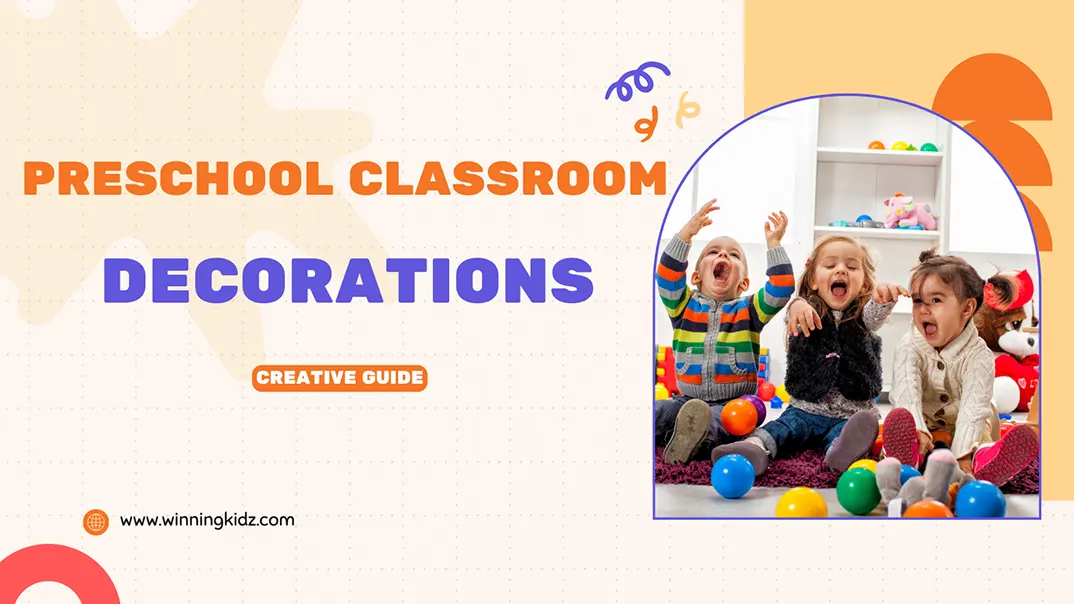Have you ever walked into a kindergarten and felt the warmth, creativity and inspiration? Do you want to know how to create your own creative kindergarten classroom? Do you know any wonderful preschool classroom decorations?
Designing preschool classroom decorations is all about finding the perfect balance. It’s about creating a space that sparks curiosity, inspires learning, and feels welcoming without overstimulating young minds. From selecting calming yet cheerful color palettes to adding playful, interactive elements, every decoration plays an important role in shaping a child’s daily learning experience.
In this guide, I’ll walk you through a step-by-step process for transforming your preschool classroom into a space that fosters creativity, learning, and comfort. Whether you’re a kindergarten director, a Montessori educator, or a preschool furniture supplier, this guide will help you craft an inspiring environment for young minds.
Why Preschool Classroom Decorations Matter?
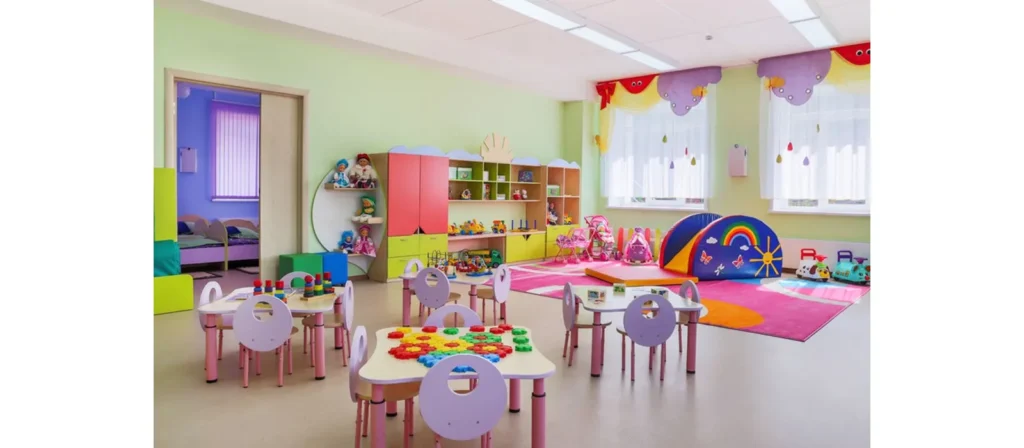
The Psychological Impact of Classroom Design
Research suggests that colors, spatial organization, and visual stimuli significantly impact children’s learning abilities and emotional well-being. Bright, warm colors can energize children, while soft pastels promote calmness and focus. Defined spaces within the classroom provide structure and help children transition smoothly between activities.
Encouraging Learning Through Visual Stimulation
Children in their early years learn best through sensory experiences. Thoughtfully designed preschool classroom decorations, including educational posters, themed displays, and hands-on interactive elements, help reinforce learning concepts and encourage exploration.
Promoting Social and Emotional Growth
A well-decorated classroom supports not just academics but also social and emotional development. Displays that celebrate student achievements, diversity, and teamwork foster a sense of pride and inclusivity among children.
Preschool Classroom Decoration Considerations
When decorating a preschool classroom, it is essential to prioritize safety, functionality, and educational value. Decorations should be visually appealing and align with children’s physical and psychological development.
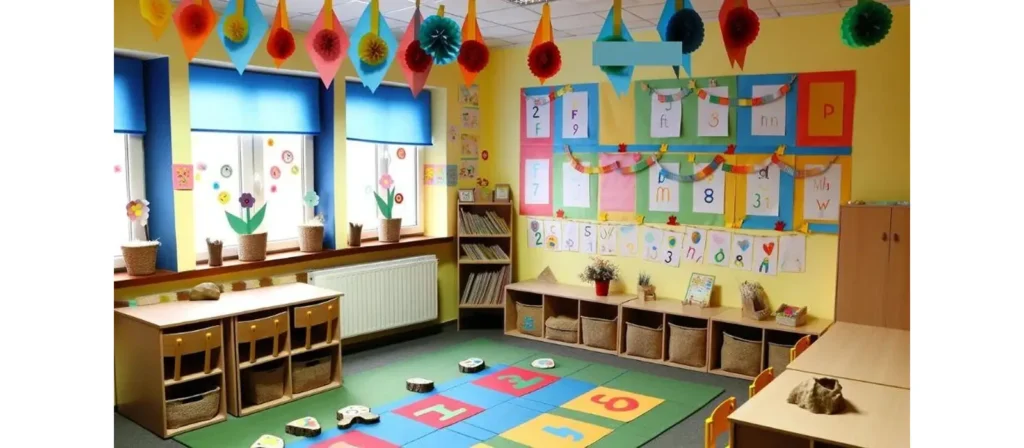
Creating an Environment That Supports Learning
A preschool classroom should be understood as a dynamic “third teacher,” where the environment itself is an active participant in the educational process. Effective decorations are therefore intentional, moving beyond mere aesthetics to serve a distinct purpose.
They transform the room into a vibrant learning landscape that fosters engagement, encourages communication, and supports social development. Rather than simply filling space, every element should be chosen to reinforce learning concepts, spark curiosity, or invite interaction. The ultimate goal is to create a structured yet flexible atmosphere where children feel secure, inspired, and motivated to explore.
Making the Most of the Available Space
Effectively utilizing the available space is a core challenge of classroom design, regardless of its size. The key lies in strategic planning to create a balanced and functional layout that serves the needs of the children.
Thoughtful decoration can be used to define distinct learning zones—such as a quiet area for reading, an open space for block play, and a dedicated station for art. This provides children with clear visual cues about the intended activities in each area, promoting order and smooth transitions.
In any classroom, optimizing vertical space is crucial for keeping the floor uncluttered and open for movement. Well-placed wall displays and storage solutions not only save space but also put learning materials within children’s reach, fostering independence.
Balancing Creativity with Budget Constraints
Budget limitations are a common reality, but they should be viewed as an invitation for creativity rather than a barrier to a beautiful classroom. A truly inspiring learning space is built on resourcefulness and purpose, not on expensive embellishments.
A strategic approach involves prioritizing investments in durable, high-quality, and versatile core items that can be adapted for various themes. Furthermore, some of the most meaningful decorations are those created in-house. Displaying the children’s own artwork is a powerful, cost-effective way to personalize the space and validate their creative efforts.
Engaging parents and the local community for materials or assistance can also transform decorating into a collaborative project, enriching the classroom with a unique sense of warmth and shared ownership.
Ensuring Decorations Align with Developmental Stages
Decorations must be thoughtfully tailored to the developmental stage of the children. The primary objective is to create an environment that is engaging without being overstimulating, as a visually cluttered space can overwhelm young minds and hinder focus.
For all preschoolers, decorations should be interactive and accessible. Placing items at their eye level encourages independent exploration and fosters a sense of autonomy.
The key is to strike a delicate balance: the environment should provide rich multi-sensory experiences through varied textures and materials, while maintaining an overall sense of calm and order. As children mature, the complexity of the visual information, such as word walls or charts, can evolve with them, supporting their emerging skills.
Prioritizing Safety in Classroom Decorations
Above all else, safety is the non-negotiable foundation of classroom design. Every decorative choice must be rigorously evaluated to ensure it poses no risk to curious and active young children.
This principle extends to structural integrity and material selection. All hanging items must be securely fastened, furniture must be stable with rounded edges, and every item a child can touch must be non-toxic, flame-retardant, and free of small parts that could become choking hazards.
Finally, the overall layout must guarantee environmental safety. This means keeping pathways and emergency exits clear, and ensuring teachers have an unobstructed line of sight for effective supervision throughout the entire classroom. A truly beautiful classroom is one where children are unequivocally safe to learn and play.
How to Decorate Spaces with Different Functions?
A well-organized classroom should have clearly defined areas for different activities. These spaces help children understand where specific tasks take place and promote smoother transitions throughout the day.
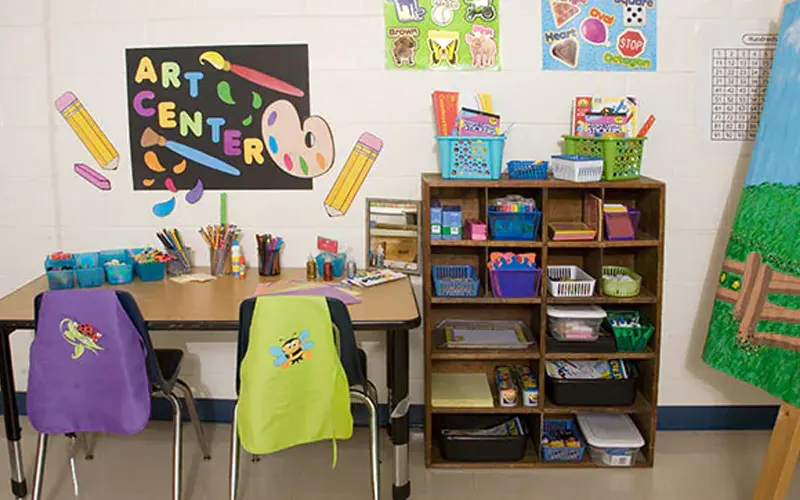
Centro d'arte prescolare
UN centro d'arte is a must-have for fostering creativity and self-expression. Stock it with child-friendly materials like crayons, paint, and recycled craft supplies. Use colorful wall displays and drying racks to showcase student artwork, making the space both inspiring and functional.
Centro scientifico prescolare
A hands-on science center sparks curiosity and exploration. Equip the area with magnifying glasses, sensory bins, and simple experiments. Posters of nature, planets, and the human body can serve as engaging preschool classroom decorations, encouraging young minds to ask questions and discover.
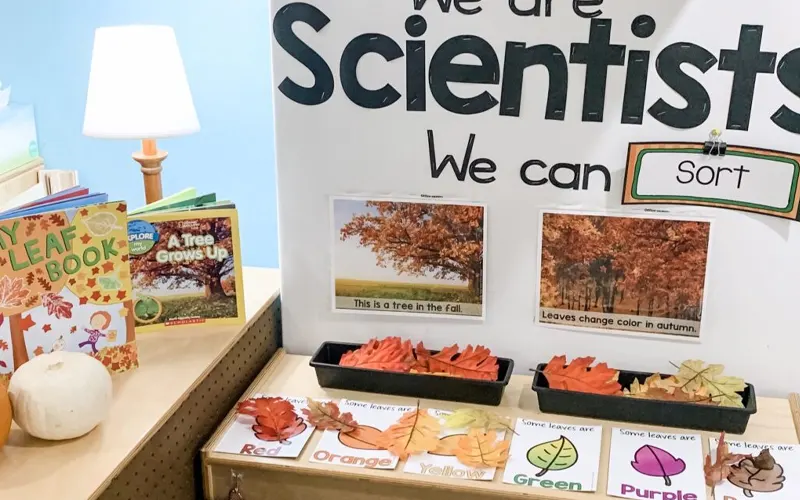
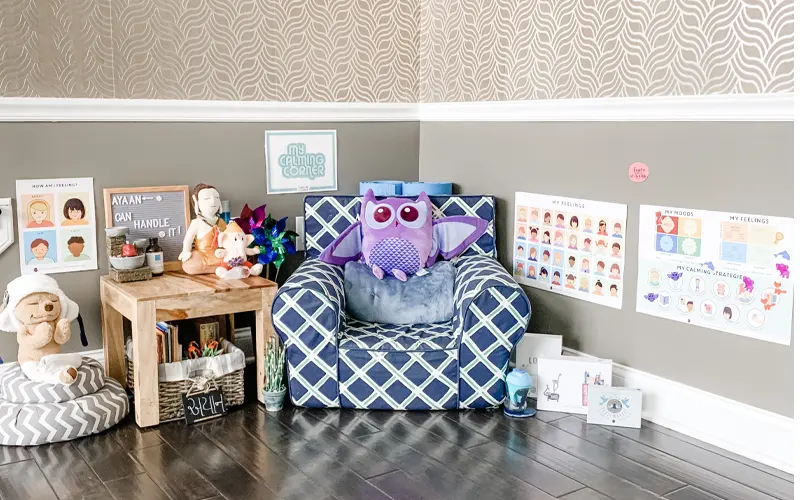
Angolo Calmante
UN angolo rilassante helps children self-regulate and manage emotions. Use soft seating, muted colors, and sensory elements like fidget toys or weighted blankets. Adding nature-themed decor, such as a starry sky canopy or gentle lighting, can make the space even more soothing.
Angolo di lettura in classe
A cozy reading nook encourages a love for books. Organize shelves with accessible picture books, add bean bags or cushions for comfort, and decorate with alphabet posters or storytelling-themed wall decals to create an inviting literary space.
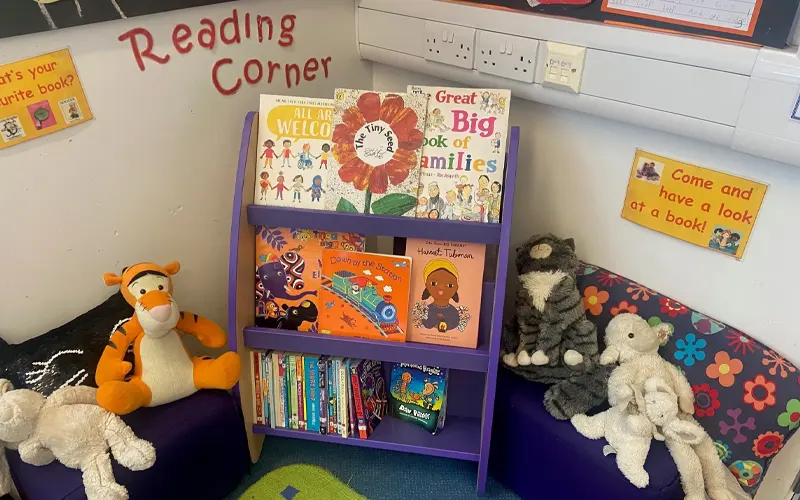
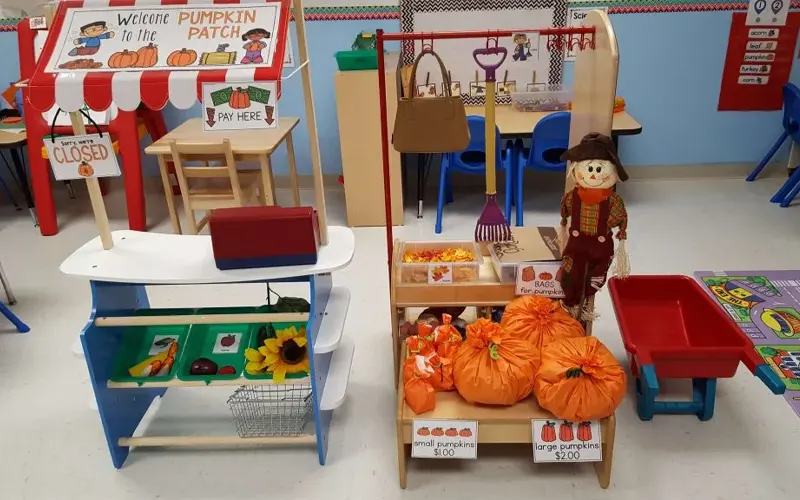
Dramatic Play Area
Dramatic play enhances social and cognitive skills. Whether it’s a pretend kitchen, a mini-market, or a doctor’s office, props and themed backdrops can bring imaginative play to life. Rotate setups regularly to keep the space engaging for children.
Preschool Classroom Decor Themes
Introducing a theme-based decoration strategy can transform a preschool classroom into an immersive learning environment. A well-chosen theme makes learning more exciting and encourages curiosity. Some popular themes includere:
- Nature-Inspired Classrooms: Incorporate trees, flowers, butterflies, and earthy tones to create a calming and eco-friendly atmosphere. Adding potted plants and nature-themed wall decals can enhance the effect.
- Under the Sea Adventures: Decorate the classroom with blue backdrops, fish cutouts, and seashell crafts. Hanging jellyfish or sea creature mobiles from the ceiling can create an immersive underwater effect.
- Space Exploration: Stars, planets, and astronaut-themed decorations can spark children’s curiosity about the universe. Glow-in-the-dark stickers and interactive solar system models make the theme more engaging.
- Safari nella giungla: Trees, animals, and adventure trails to create a sense of exploration.
Changing themes throughout the school year keeps the classroom exciting and fresh. Seasonal or cultural themes can also help children learn about different traditions and celebrations.
Beautiful Preschool Furniture
Understanding the crucial balance between beauty, function, and safety is exactly why we design and build our furniture at Winning Kidz. We believe exceptional classroom furniture is an investment in a child’s learning journey. We’ve moved beyond the basics to offer pieces that actively enhance the educational environment, and we’re proud to present them to you directly.
Tables & Chairs Designed for Young Learners Our collection of child-sized tables and chairs is where durability meets design. Forget generic furniture—we offer a curated palette of vibrant colors, serene pastels, and timeless natural wood finishes to perfectly match your classroom theme. Every piece is built with safety as a priority, featuring rounded corners and non-toxic, easy-to-clean surfaces. Ergonomically crafted for growing bodies, our furniture ensures children are comfortable and supported, whether they are creating art, learning their letters, or sharing a meal.
Intelligent Storage That Teaches We see storage as an essential part of the learning landscape. Our modular shelving units are designed at a child-friendly height, empowering students to take ownership of their space. Choose from our signature open shelves with labeled bins to promote organization, or opt for our popular transparent bins that allow children to easily see and access materials. This isn’t just about tidiness—it’s about building independence and responsibility from the ground up.



Inviateci un messaggio per qualsiasi domanda o richiesta di preventivo. I nostri esperti vi risponderanno entro 48 ore e vi aiuteranno a scegliere il prodotto giusto per voi.
Preschool Classroom Wall Decorations
Walls offer an excellent canvas for learning and inspiration. Interactive wall decor, such as alphabet and number charts, world maps, and growth measurement charts, can double as decoration and educational tools. Displaying children’s artwork adds a personal touch and instills a sense of pride in young learners. A dedicated “Wall of Fame” can celebrate students’ creativity and achievements.
Bulletin boards can also serve as focal points for themed or seasonal decorations. Rotating these displays according to different lessons keeps the environment dynamic. Consider incorporating sensory elements like felt boards, Velcro shapes, or magnetic letters to engage children in interactive learning.
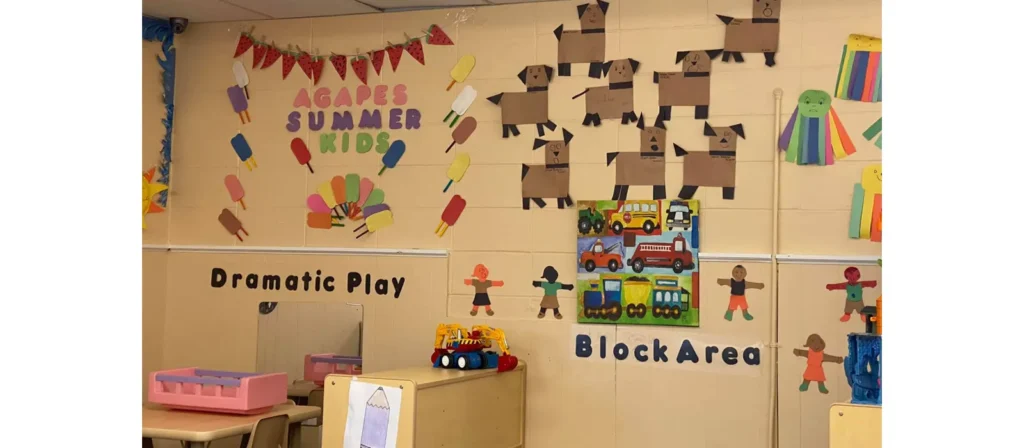
Carpeting and Flooring
Flooring choices play a crucial role in classroom decor and functionality. Soft carpets O foam mats in activity areas create a cozy atmosphere and reduce noise levels. Educational rugs featuring letters, numbers, or road maps add an interactive element to the floor space.
Using modular carpets or play mats allows flexibility in the classroom layout. These can be rearranged to create distinct zones for reading, play, and group activities. Additionally, washable, non-slip rugs ensure safety while maintaining cleanliness in a high-traffic preschool setting.
Preschool Classroom Door Decorations
The classroom door serves as the first impression of the learning space. Decorating it with welcome signs, student name tags, or seasonal themes can make it more inviting. Interactive elements, such as a “Question of the Day” or a mood tracker, can also be incorporated into door designs to engage students even before they enter the room.
A themed entrance—such as a jungle door with vines and animals, or a castle entrance for a fairytale theme—can make children excited to step into their learning space. Changing door decorations throughout the year keeps the atmosphere fresh and engaging.
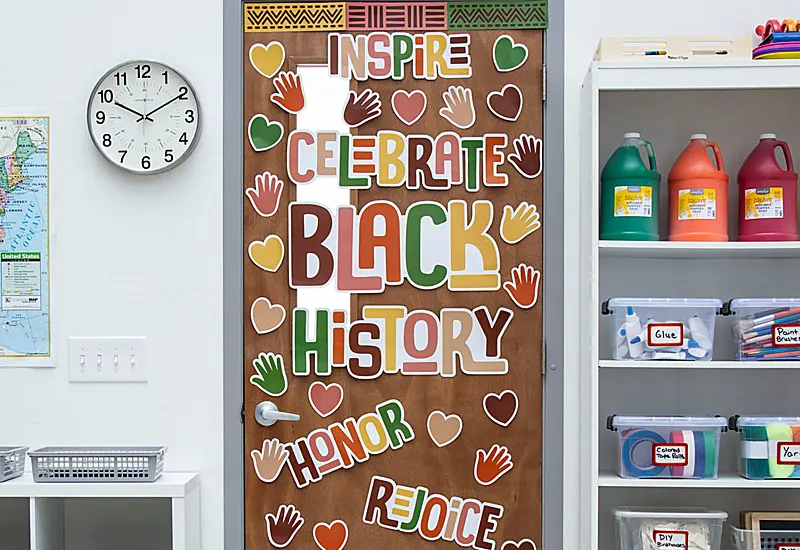
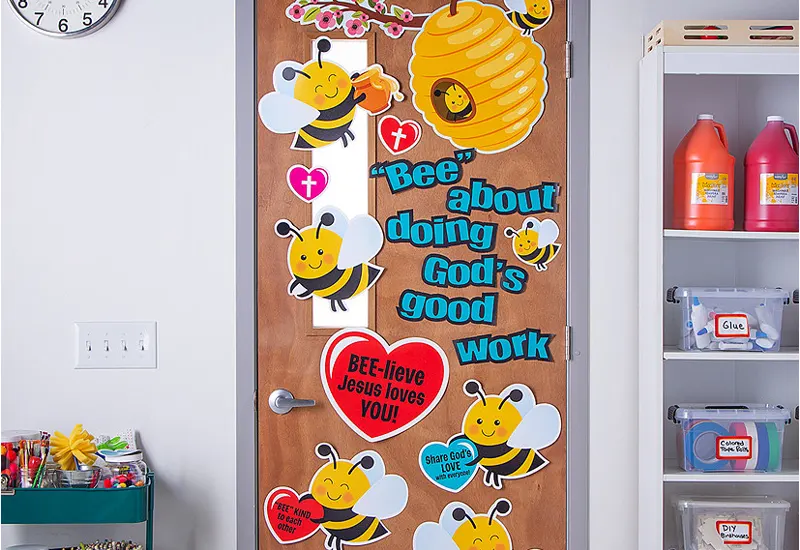
Curtains and Window Treatments
Natural light is essential for a vibrant learning environment, but the right curtains or window treatments can help control brightness while adding to the decor. Light, sheer curtains in pastel colors or playful patterns can enhance aesthetics without blocking light. Consider using themed window clings or hanging decorations to make the windows visually appealing.
Preschool Classroom Ceiling Decorations
Often overlooked, the ceiling can be a fantastic area for decoration. Hanging paper lanterns, colorful mobiles, or even DIY cloud and star decorations can make the classroom feel more immersive. Stringing up banners with positive affirmations can also reinforce a growth mindset.
Incorporate Natural Elements
Bringing nature into the classroom has numerous benefits, from improving air quality to fostering a sense of calm. Indoor plants, nature-themed murals, and wooden furniture help create a soothing atmosphere. A small classroom garden or an aquarium can serve as both decor and an interactive learning tool.
Additionally, incorporating natural textures—such as wooden shelves, wicker baskets, or linen curtains—adds warmth to the space. Providing sensory experiences with nature, such as a tactile sensory bin filled with sand, leaves, or pinecones, enhances children’s connection to the environment.
Seasonal Preschool Classroom Decorations
Decorating a preschool classroom according to the seasons keeps the environment fresh, engaging, and educational. Seasonal themes help children connect with nature, explore changes in the world around them, and celebrate special occasions. Whether it’s bright flowers for spring or cozy snowflakes for winter, seasonal preschool classroom decorations enhance the learning atmosphere and make the classroom an exciting place for young learners.
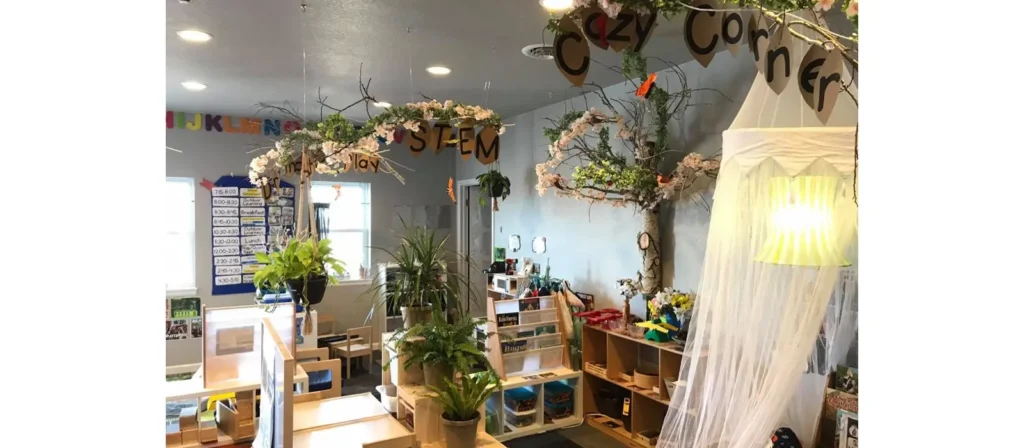
Spring Preschool Classroom Decorations
Spring is the season of renewal, making it the perfect time to incorporate fresh, colorful, and nature-inspired preschool classroom decor themes.
- Wall Decorations: To create a vibrant setting, use preschool classroom wall decorations like butterfly cutouts, flower garlands, and rainbow banners.
- Classroom Door Decorations: Consider classroom door decoration ideas for preschool, such as a “Growing Garden” door with paper flowers and students’ names as petals.
- Ceiling Decorations: Hanging decorations like paper clouds, raindrops, and sunshine can make the space feel light and airy.
- Activity Corners: Create a planting station where children can grow small plants or herbs, incorporating classroom decoration ideas for preschool with garden themes.
- Printable Decorations: Use preschool classroom decorations printable materials such as spring-themed alphabet posters and nature-based learning charts.
Summer Preschool Classroom Decorations
Summer classroom decorations should reflect warmth, adventure, and fun outdoor activities. Classroom decor ideas for preschool in summer often include beach, ocean, and camping themes.
- Wall Decor: Display ocean waves, fish, and seashells with wall decor for preschool classroom to create an underwater world.
- Themed Classroom Decor: Use tema della classe prescolare decoration featuring beach balls, sandcastles, and sunglasses for a playful atmosphere.
- Classroom Windows: Add colorful sun decals or handprint art to brighten up preschool classroom window decorations.
- DIY Decor: Incorporate DIY preschool classroom decor by crafting paper fans, kites, and pinwheels.
Fall Preschool Classroom Decorations
Fall decorations bring warm tones, harvest themes, and seasonal celebrations. Fall decorations for preschool classroom often focus on pumpkins, leaves, and woodland creatures.
- Wall & Bulletin Boards: Use classroom wall decoration ideas for preschool with falling leaves, scarecrows, and cozy autumn scenes.
- Classroom Doors: Get creative with fall classroom door decoration ideas for preschool, such as a “Pumpkin Patch” with each student’s name on a pumpkin.
- Hanging Decor: Preschool classroom ceiling decorations can feature autumn leaves, acorns, and owls.
- Elementi interattivi: A gratitude tree where children add thankful notes is a great preschool classroom decoration idea.
Winter Preschool Classroom Decorations
Winter themes create a cozy and magical learning environment with snowflakes, mittens, and festive decor. Winter decorations for preschool classroom bring excitement as children learn about winter weather and holidays.
- Wall & Window Decorations: Use preschool classrooms winter decorations like snowflake cutouts, icicle garlands, and winter animals.
- Classroom Doors: Winter classroom door decoration ideas for preschool include a “Winter Wonderland” theme with snowmen and a sledding scene.
- Ceiling Decor: Hang cotton snowflakes or soft lights for a festive atmosphere.
- Sensory Areas: A snow-themed sensory bin with fake snow and winter animal figurines enhances classroom decorating themes for preschool.
Holiday Preschool Classroom Decorations
Holiday decorations make preschool classrooms festive and exciting. Whether it’s Halloween, Thanksgiving, or Christmas holiday, preschool classroom decorations help children understand cultural traditions while adding warmth and fun to the space.
Preschool Halloween Classroom Decorations
Halloween decorations bring playful spookiness to the classroom. Preschool classroom halloween decorations should be fun and not too scary.

- Wall Decorations: Use classroom decorations for preschool, like friendly ghosts, pumpkins, and bats.
- Classroom Doors: Preschool classroom door decoration ideas can include a “Friendly Monster” or “Pumpkin Patch” theme.
- Interactive Decor: A “Trick-or-Treat” counting board can be part of the classroom preschool decoration while reinforcing learning.
- DIY Crafts: Encourage children to create paper jack-o’-lanterns and spider webs to decorate the classroom.
Thanksgiving Preschool Classroom Decorations
Thanksgiving decor focuses on gratitude, harvest, and togetherness. Classroom decor preschool for Thanksgiving can include warm autumn hues and thematic elements.
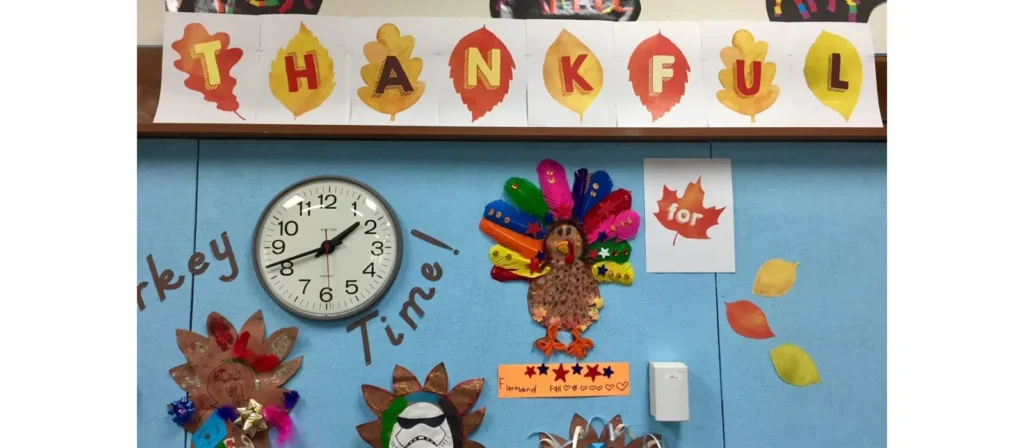
- Wall & Bulletin Boards: A “Thankful Tree” with student-made leaves expressing gratitude makes for an engaging preschool classroom wall decor.
- Classroom Door Decorations: Preschool classroom door decorations like a turkey with students’ handprints as feathers add a personal touch.
- Table Decorations: Use decorations for classroom preschool elements such as paper pumpkins, cornucopias, and autumn garlands.
Preschool Christmas Classroom Decorations
Christmas decorations bring joy and warmth to the preschool environment. Preschool Christmas classroom decorations can feature holiday colors, festive characters, and cozy winter themes.
Printable Decor: Preschool classroom decorations printable, like holiday-themed alphabet charts and number posters, add a festive learning touch.
Wall & Ceiling Decor: Use Christmas decorations, such as snowflakes, Christmas trees, and twinkling lights, in the preschool classroom.
Classroom Doors: Preschool classroom door decoration ideas include a “Santa’s Workshop” or “Gingerbread House” theme.
Christmas Craft Corner: Christmas classroom decoration ideas preschool can include a DIY ornament-making station.
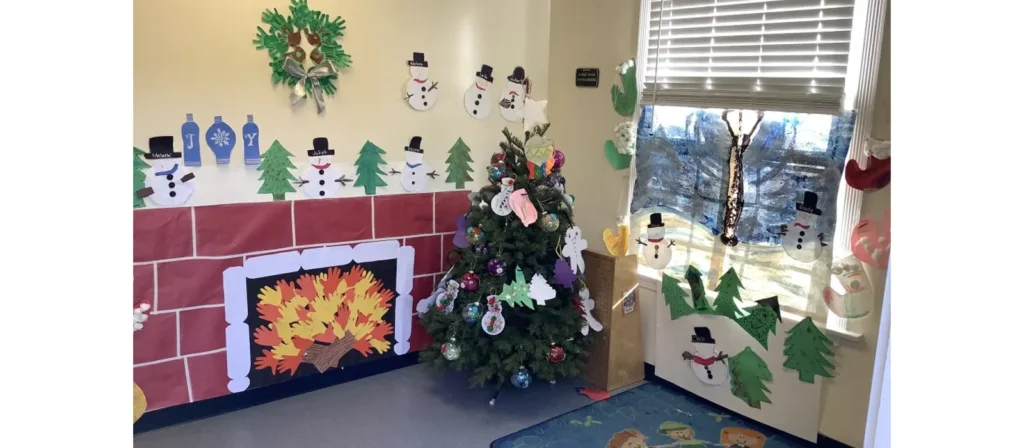
Conclusione
Preschool classroom decorations play a crucial role in shaping the learning experience for young children. A well-decorated classroom provides visual stimulation, encourages interaction, and fosters creativity. By carefully selecting themes, using interactive elements, and incorporating seasonal and holiday decor, educators can create a dynamic and engaging learning environment.
From interactive bulletin boards to nature-inspired decorations, every element of the classroom should support learning while making the space welcoming and enjoyable. Decorations should be both functional and fun, ensuring that children feel inspired every day they step into their preschool classroom.
By continuously refreshing the environment, teachers can keep students engaged and excited about learning, creating a foundation for lifelong curiosity and creativity.

